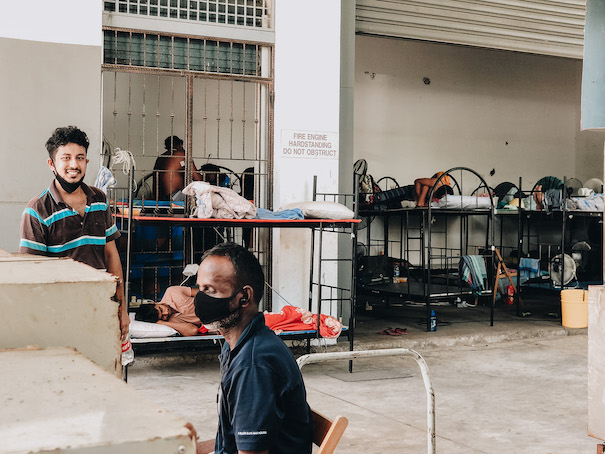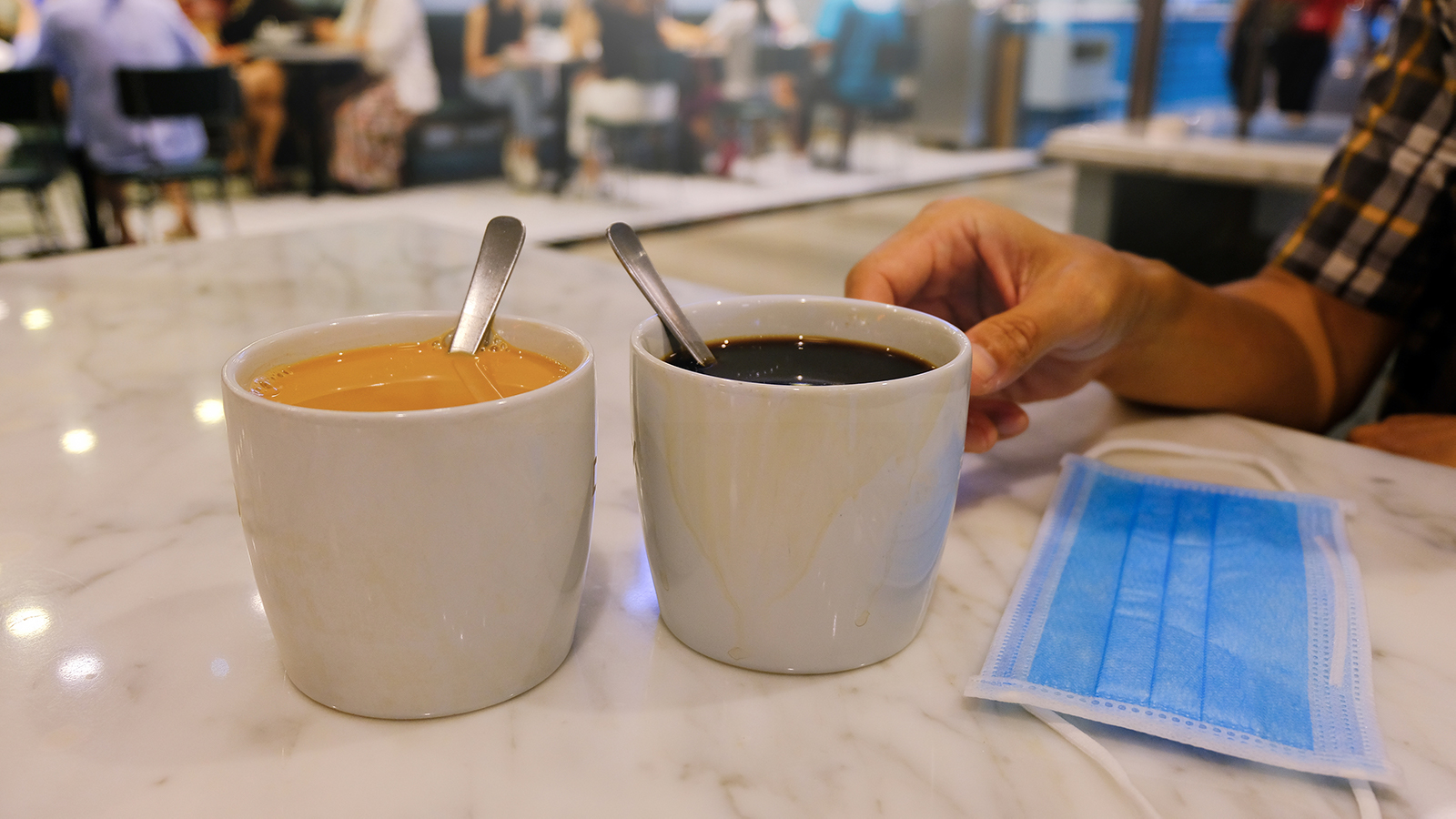Listening to yesterday’s announcement about Phase 3, it wasn’t much that we weren’t already expecting.
Over the past few weeks, months even, we have been flirting with news of Phase 3 and so PM Lee’s address yesterday (Dec 14) didn’t bring any earth-shattering news, just confirmation of what we’ve already been hoping for.
Don’t get me wrong. It certainly felt good listening to our leaders tell us how far we’ve come. From the fears and uncertainty in March and April, through our concerns over our health, our jobs and the economy, we have emerged more hopeful.

The uncertainty remains – the battle is “far from won”, warns Mr Lee, as the pandemic still rages in parts of the world – but our fears have gone.
It’s a great morale boost to finally put a date – Dec 28 – to Phase 3.
That, coupled with the news that Singapore has secured enough vaccines for everyone on our sunny island by the end of the next year, means that it’s looking like a very merry Christmas indeed.
Oddly, the thing that really struck me from yesterday’s announcement came not from Mr Lee, but from Second Minister for Manpower Tan See Leng.
He was talking about the measures that Singapore was putting in place for migrant workers in the coming year and ended his press conference segment with a plea to stay the course.

Dr Tan said: “No one is really safe until all of us are safe.”
This truism sounds stark and a little depressing, and hearing it made me pause for thought.
Reaching out to migrant workers
Covid has highlighted some of the inequalities within our society. One of the biggest groups of people “hiding in plain sight” in Singapore is our migrant worker community. The pandemic has shown how most Singaporeans, myself included, have taken this group so critical to our nation-building for granted.
Hearing how our migrant worker friends can return to the community in a pilot programme from next year is positive news. Already, some have moved to Quick Build Dorms, a much-needed improvement over their poor standards of living before Covid-19 shone a light on the situation.
Yet there is always room for improvement.
I am ashamed to admit that I didn’t know migrant workers are still only permitted to leave their dormitories for work, errands and to visit recreation centres. Even within their dorms, they are subject to many restrictions.

Remember when we went through the circuit breaker? Suffered the cabin fever that made some Singaporeans go off the deep end of frustration and self-centeredness? Well, as of the time of this writing, those in the dormitories are still dealing with restrictions such as having no access to communal cooking facilities, sports and recreation options.
While Singaporeans complain about having to wait for hours to check-in for their hotel staycations purchased with Singapore Rediscover vouchers, or about how the travel bubble to Hong Kong has been delayed, our migrant worker friends have been stoically staying in their dorms, subject to bi-weekly testing – going out only to work and returning to their bunks only to rest.
It’s Raining Raincoats founder Dipa Swaminathan tells The Pride: “Yesterday’s news doesn’t change much for the migrant workers. A lot of their movements are still restricted. Our migrant workers are making a lot of sacrifices so we can be safe.”
“The important thing to bear in mind is that they are human beings just like us. They are alone here, and their families are back home. And they are still among the lowest paid among us. That’s a terrible triple whammy.”
“Everyone should still do what they can to help. From whatever walk of life you are in, show some compassion.”

As part of its continuing outreach to the migrant workers community, It’s Raining Raincoats is organising events such as bus tours for workers to see the Christmas lights, as well as food and gift giveaways. Follow to find out more here.
Samuel Lim, who works with Hope Initiative Alliance (HIA), says: “We see (migrant workers) a few times a week. HIA works with our adopted dorms to take some workers out on MOM-approved outings to parks for some fresh air.”
He adds: “Despite all the restrictions put on them, these workers are really full of gratitude. On an individual level, they’re extremely appreciative. What surprises me over and over again is how there isn’t a bitter bone in any of them regarding their situation.”
For the Christmas period, HIA has organised some ways for members of the public to spread some cheer to migrant workers.

Not just migrant workers, but our neighbours too
Just like one of Covid’s silver linings is to shed light on the lives of our migrant workers, another is the opportunity for Singaporeans to spread care and concern for their neighbours.
Over the past months, we have seen how Singaporeans have come together to support one another. Of course, this wasn’t the case at first, when our kiasu and kiasi compatriots cleared supermarket shelves in a flurry of panic buying.
But when cooler heads and warmer hearts prevailed, we saw many stories of people reaching out to help their fellows.
[other_stories id=8959,9121]
We’ve heard of Singaporeans contributing their Solidarity payments, singing in virtual choirs and handing out free sanitisers and masks.
Some, inspired by their own experiences, have set up movements to help the needy, like Kampung Kaki’s Tan Li Mei, a Covid-19 survivor who wanted to pay forward what healthcare workers did for her. She and her volunteers have helped pockets of Singaporeans who have been hurting, not just due to Covid, such as this father and daughter duo who has dealt with multiple personal tragedies over the years.
And Kampung Kaki is just one of the very many ground-up movements that have sprung up this year.

Finding kindness in Covid
In many ways, Covid has increased the distance between people. We keep strangers at arms’ length. We are faceless behind the ubiquitous masks that we have to put on. We are reduced to nameless numbers linked by our TraceTogether apps.
Yet ask yourself this: Have you become kinder after Covid as compared to before?
Call me an idealist but I daresay we have. It is when something comes under threat, that we cherish it a bit more.
Covid has forced us to slow down, and somewhere along the way, we have learnt to smell the roses.
We’ve learnt to be kind to our neighbours, reach out to our families and be more attentive to our friends.
Yes, we have all struggled with our darker periods, through mental wellness issues, especially when having to deal with the challenges of our new normal.
But we aren’t alone. And if you don’t already know that, I’m reminding you of it now.

So how do we ensure that we continue to cherish each other? There has been talk of herd immunity against Covid. The jury is still out on that, but suffice it to say, it’s not looking feasible without working together with a vaccine.
So let’s practise a new kind of herd behaviour. One that looks after each other. In nature, the herd looks after its members. There is safety in numbers, with the stronger members looking out for the young and the frail.
We are already practising this herd behaviour. Via ground-up movements and volunteer organisations, in caring for our loved ones and through interactions with those around us, we are looking after our own.
“No one is really safe until all of us are safe.” Dr Tan’s words are stark. Yet they cheered me up.
That’s because with one simple sentence, Dr Tan suggested what we should all aspire towards – to be greater. He treated everyone in Singapore as compatriots, regardless of race, religion, culture or ethnicity.
There was no “them” in his statement. There is only “us”.
To quote one of my daughter’s favourite songs: “We’re all in this together.”
As we look into Phase 3 and beyond; in 2021 and after, let’s not forget about the lessons of kindness we have learnt this year. We’ve been taught them at a cost, and the battle is still not won.
But we know which side we’re on. The same side, together.
[ttcta]






